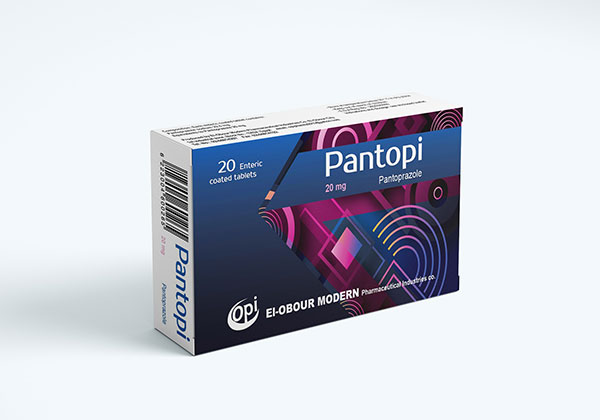Pantopi 20 mg
NAME OF THE MEDICINAL PRODUCT
Pantopi 20 mg
QUALITATIVE AND QUANTITATIVE COMPOSITION
Each Enteric-Coated Tablet of pantopi 20 mg , contains 22.5 mg Pantoprazole Sodium eq.to pantoprazole 20 mg .
PHARMACEUTICAL FORM
Pantopi 20 mg : Yellowish cream color , slightly biconvex E.C.T
Indication
Prevention of gastroduodenal ulcers induced by non-selective non-steroidal anti- inflammatory drugs (NSAIDs) in patients at risk with a need for continuous NSAID treatment
Symptomatic gastro-oesophageal reflux disease.
For long-term management and prevention of relapse in reflux oesophagitis.
– Gastric and duodenal ulcer.
-Zollinger-Ellison-Syndrome and other pathological hypersecretory conditions.
Contraindications
Interaction with other medicinal products
Fertility, pregnancy and lactation
PHARMACOLOGICAL PROPERTIES
PHARMACEUTICAL PARTICULARS






